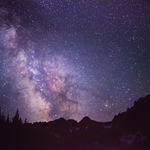
Hotel Photography: Free Contemporary and Vintage Hotel and Motel Stock Images
Free Stock PhotosContents of this Post
Hotel Photography: Free Stock Photos for Photographers, Bloggers, and Designers
Select the button below any hotel photography image to view a free, downloadable stock image for free use on your website, blog, print or digital media, or other project. Check out all of our free contemporary and vintage motel stock photos.
Copyright and Credit: Hotel and Motel Photography
How to Credit
All hotel and motel images are property of Mod Fam Global LLC and offered for private and commercial use, free of charge. Please credit Mod Fam Global, LLC, https://modfam.global/ for any public, online, or print materials using our images.
Send us a Note
If you use any of our free contemporary and vintage hotel and motel stock images for online or commercial use, please send us a note and let us know how you used the photos. We love to see how our photography is being used, and we appreciate photo credit and links back to our site.
Photography Tutorial: How to Photograph Contemporary and Vintage Hotels and Motels
Manual ISO Settings for Hotel Photography
Of the three main manual settings to consider for hotel and motel photography, ISO is the simplest. ISO simply refers to the light sensitivity of film or digital sensor. The lower your ISO, the less sensitive to light, and the longer it will take to expose. Higher ISOs allow you to photograph in lower light, but give you a grainy effect with more visual “noise.” For crisp, clear images, use a lower ISO. On bright sunny days, I use the lowest ISO possible to minimize grain. The hotel photo below captures all the detail at a low ISO. On grey, cloudy days like the photos above at Yellowstone’s Old Faithful Inn, a slightly higher ISO around ISO640 or ISO800 still gives me a crisp image but with greater light sensitivity. Choose your ISO based on light conditions and the end result you want to create.
Manual Aperture Settings for Hotel Photography
Aperture is the most difficult of the three settings to figure out and master when photographing contemporary and vintage hotels and motels. That’s because it’s a little counter-intuitive. Aperture, or “f-stop,” refers to the size of the opening of the lens. As you might imagine, a larger opening or aperture lets more light in and exposes the image with more light. And a smaller aperture lets less light in, so it takes longer to expose the same amount of light. Here’s the hard part, though. A smaller f-stop correlates to a larger opening. So f3.5 or f4.5 are small f-stops but the largest aperture openings. Conversely, f22 is a large f-stop number, but a tiny opening.
Choosing Aperture Settings for Hotel Photography
Aperture works together with shutter speed and ISO to expose an image. So your aperture setting depends, in part, on those other two settings. When photographing hotels and motels, I generally use a smaller aperture. That’s because aperture is also related to depth of field, and I want to have most or all of the building in focus for these photos. If you use f4.5, for instance, you may get more light exposed, but the focus area will be very small, blurring out most of the foreground and background. Start around f9 or f11, and then adjust your shutter speed from there. In very low light conditions, you’ll have to open your aperture more or use a tripod. In bright light conditions, you can restrict your aperture more, but a medium setting around f11 should be a good starting point.
Manual Shutter Speed Settings for Hotel Photography
As I pointed out above, shutter speed works closely with aperture to control the speed and amount of light exposing your image. Too slow, and your shutter speed will let too much light in, overexposing the frame. Too fast, and your shutter speed will not let enough light in, obscuring critical details in shadow. Take the vintage hotel photo below, for example. The bright, diffused light makes it difficult to balance the detail in the shadows under the roof of the historic hotel. By manually slowing down the shutter speed a bit, though, I was able to capture more of the detail in the shadows. This brightened the sky a lot, but it creates the final image I was trying to capture.
Choosing Shutter Speed Settings for Hotel Photography
I recommend starting by using a light meter or your camera’s automatic settings to get an average light reading. At ISO800, for example, your camera may select f11 and a shutter speed of 1/400 of a second. In the image below, that would darken both the shadows and the sky, averaging the light in the full frame. Starting with that, you can then adjust your shutter speed up or down to create the image you want. Remember that auto settings are an average, so it may create an image that is over- or under-exposed. An auto setting can give you a good baseline, but then manually adjust until you’re happy with the final photo. It’s easy to miss all the great detail in contemporary and vintage hotels and motels unless you manually adjust your settings!



























